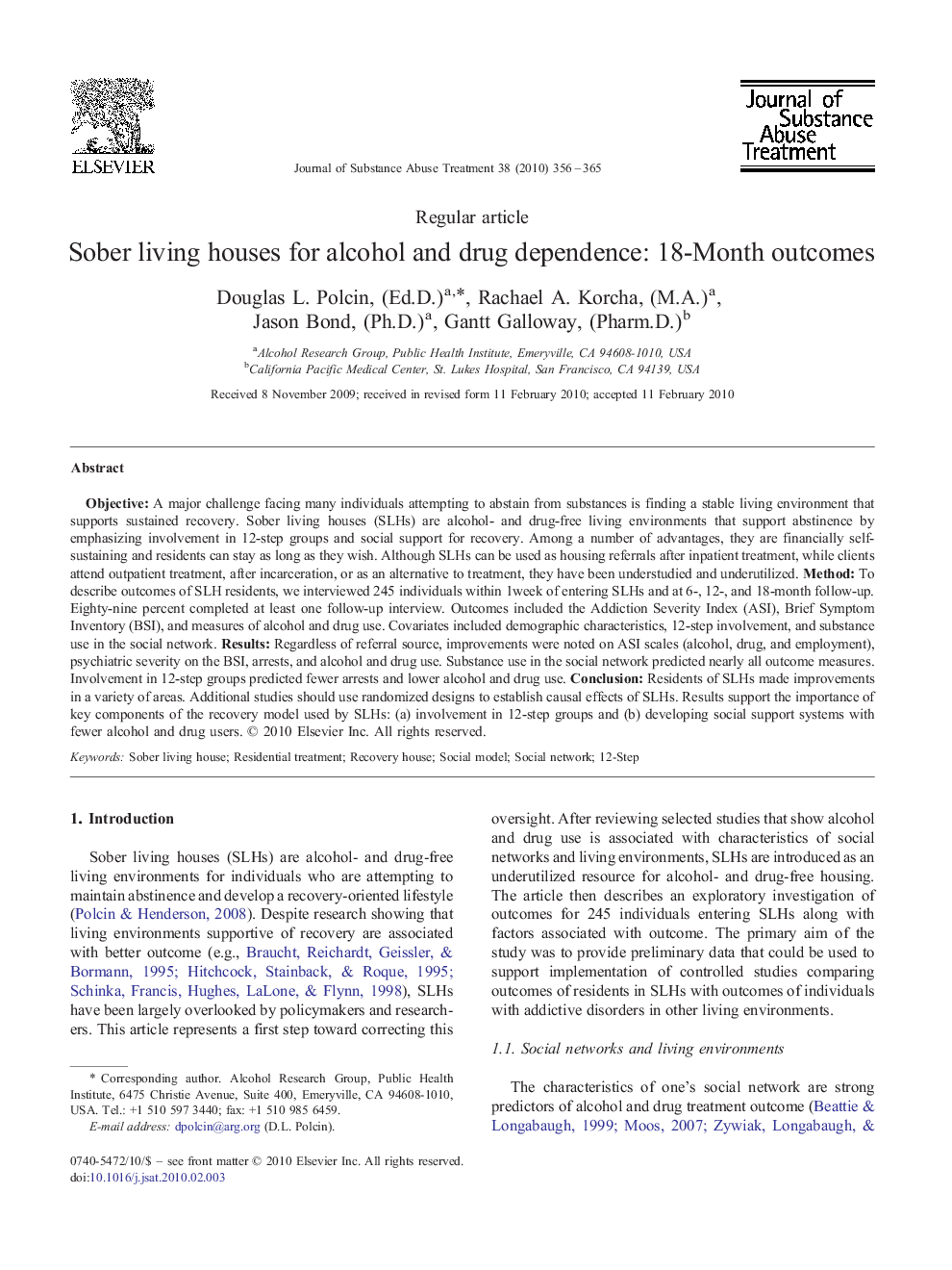| Article ID | Journal | Published Year | Pages | File Type |
|---|---|---|---|---|
| 329180 | Journal of Substance Abuse Treatment | 2010 | 10 Pages |
ObjectiveA major challenge facing many individuals attempting to abstain from substances is finding a stable living environment that supports sustained recovery. Sober living houses (SLHs) are alcohol- and drug-free living environments that support abstinence by emphasizing involvement in 12-step groups and social support for recovery. Among a number of advantages, they are financially self-sustaining and residents can stay as long as they wish. Although SLHs can be used as housing referrals after inpatient treatment, while clients attend outpatient treatment, after incarceration, or as an alternative to treatment, they have been understudied and underutilized.MethodTo describe outcomes of SLH residents, we interviewed 245 individuals within 1week of entering SLHs and at 6-, 12-, and 18-month follow-up. Eighty-nine percent completed at least one follow-up interview. Outcomes included the Addiction Severity Index (ASI), Brief Symptom Inventory (BSI), and measures of alcohol and drug use. Covariates included demographic characteristics, 12-step involvement, and substance use in the social network.ResultsRegardless of referral source, improvements were noted on ASI scales (alcohol, drug, and employment), psychiatric severity on the BSI, arrests, and alcohol and drug use. Substance use in the social network predicted nearly all outcome measures. Involvement in 12-step groups predicted fewer arrests and lower alcohol and drug use.ConclusionResidents of SLHs made improvements in a variety of areas. Additional studies should use randomized designs to establish causal effects of SLHs. Results support the importance of key components of the recovery model used by SLHs: (a) involvement in 12-step groups and (b) developing social support systems with fewer alcohol and drug users.
